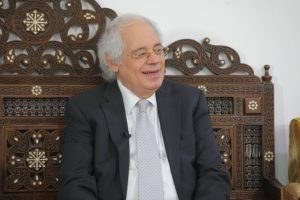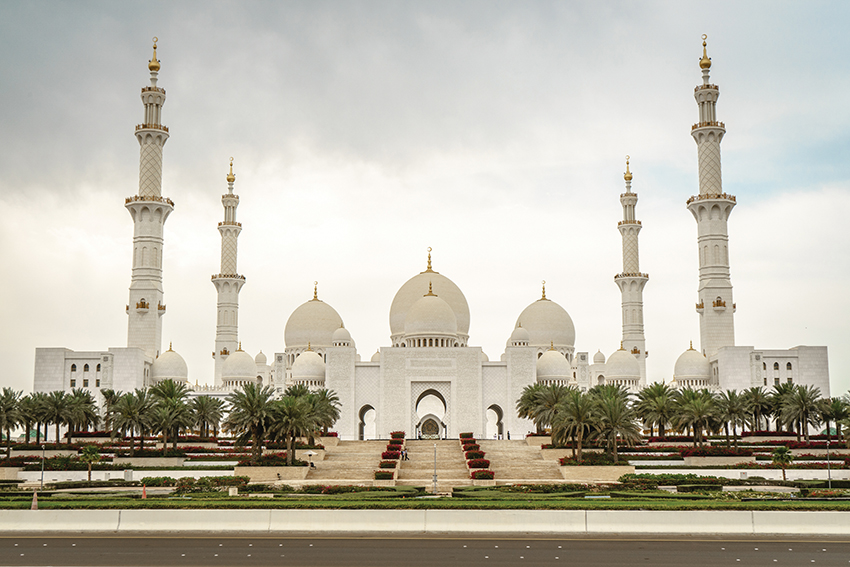1,466 عدد المشاهدات
Jamal Bin Huwaireb Studies Center – Dubai
Historian and cultural advisor Jamal Bin Huwaireb, CEO of the Mohammed bin Rashid Al Maktoum Knowledge Foundation, has requested the concerned authorities and researchers to document and register the UAE’s mosques, which may number more than 7000 mosques.
This came in a session organized by the Jamal Bin Huwaireb Studies Center (JBHSC) entitled “An Urban View on Mosques in the UAE” in which the researcher and translator Kamel Yousef spoke about the “Encyclopedia of Mosques in UAE”, in the presence of a group of officials, intellectuals in addition to a number of media members and journalists.
Bin Huwaireb said: “Mosques are considered one of the most important pillars of the history of the UAE, and they represent the memory of the region, but it is noted that the history of our mosques has been overlooked, hence we call to register and document it.”
Ten Chapters

Kamel Yousef highlighted the Encyclopedia saying “We can divide this study into two parts: the first represents an urban view of mosques in UAE, and the second sheds light on the features of future mosque architecture.”
The lecturer went on to say: “The Encyclopaedia includes a large number of pictures of the country’s mosques, which number according to the latest statistics, 6527. It also highlights the architectural development of the mosques in UAE.”
Scientific study
Kamel Yousef said: In the first chapter, we read the main features of mosques architecture in UAE, and shed light on the development of mosque architecture in general.
The second chapter is a rare study of the historic and archaeological mosques in UAE, where the reader is presented with an important set of facts.
The third chapter contains a glimpses of mosque architecture in Abu Dhabi, where we find the basic facts that revolve around these mosques in terms of architecture.
Sheikh Zayed Grand Mosque
The lecturer said: The first official documentation of ancient mosques in Abu Dhabi dates back to the year 1979. He also mentioned two examples of mosques; Al-Otaiba Mosque, which was demolished and replaced by the Sheikh Khalifa bin Zayed the First Mosque.
Second, is the Sheikh Zayed Grand Mosque, which has four minarets in the Mamluk style and includes 72 unified design domes.

Mosques in Dubai
Kamel Yousef added: As for Dubai, the prosperity of commerce in the late nineteenth century was associated with the demand for the construction of mosques in residential and commercial areas, foremost among which is the Great Mosque on Dubai Creek, characterized by its unique style and minaret, with 25 domes. Al Shuyoukh Mosque is the first mosque in the Shindagha area, as it was built in 1897 with an area of 220 square meters.
The number of historical mosques in Dubai is 20, including the Great Mosque and Al Farooq Mosque

He went on to say: we learn about the aesthetics of mosque architecture in Dubai through 14 mosques, foremost of which is: the Jumeirah Mosque, the Grand Mosque, the Sheikh Mohammed bin Rashid Al Maktoum Mosque in Jumeirah, the Sheikh Hamdan Bin Rashid Al Mosque Maktoum in Port Saeed.
Al Farooq Mosque
Located in Al Safa First, Jumeirah, Al Farooq Omar Bin Al Khattab Mosque is one of the most prominent mosques of the Emirates. It was built in 1986 and was expanded in 2003. In 2010, it was rebuilt and was later inaugurated in Ramadan 2011. The mosque is characterized by its beauty architectural and decorative design and its spiritual and cultural community message.
Mosques in Sharjah
The lecturer added: In the fifth chapter, we go to Sharjah where architecture is linked to the concept of culture.
The Sharjah Mosque, previously Salah Al-Din Al-Ayyubi Mosque, was the focal point in the old city of Sharjah. Out of the 21 ancient mosques, only five mosques remained, among them the Sharjah Mosque. The most prominent mosques in Sharjah include: Al Noor Mosque on the Sharjah Corniche (built in 2005), and King Faisal Mosque.

Ras Al Khaimah
In Ras Al Khaimah, archaeological surveys revealed more than 30 mosques dating back to the nineteenth century.
The encyclopedia chapters continue, so the reader will embark on a unique journey with the architecture of the mosques in Ajman in the sixth chapter including Rashid bin Humaid Al Nuaimi Mosque and Fatima Bint Ali Al Nuaimi Mosque.

In Chapter Seven, the lecturer mentioned mosques in Umm al-Quwain including Imam Abu Hanifa al-Numan Mosque, established in 2003.
Then the lecturer mentioned the mosque architecture in Fujairah, with special attention to the new Sheikh Zayed Bin Sultan Al Nahyan Mosque, which is considered the second largest mosque built in the country; and also shed light on Al Bidya Historical Mosque which is said to date back to 500 years ago.
The future of mosque architecture
In the tenth chapter, the lecturer sheds light on a detailed study of the future of mosque architecture in the UAE, where he tackled the relationship between the mosques architecture and the national identity.


Standardized form of Minarets
Kamel Yousef explained that a unified minaret was adopted in Dubai for all mosques, with the opportunity for architects to adopt the architectural style that matches the aesthetics of the region.





